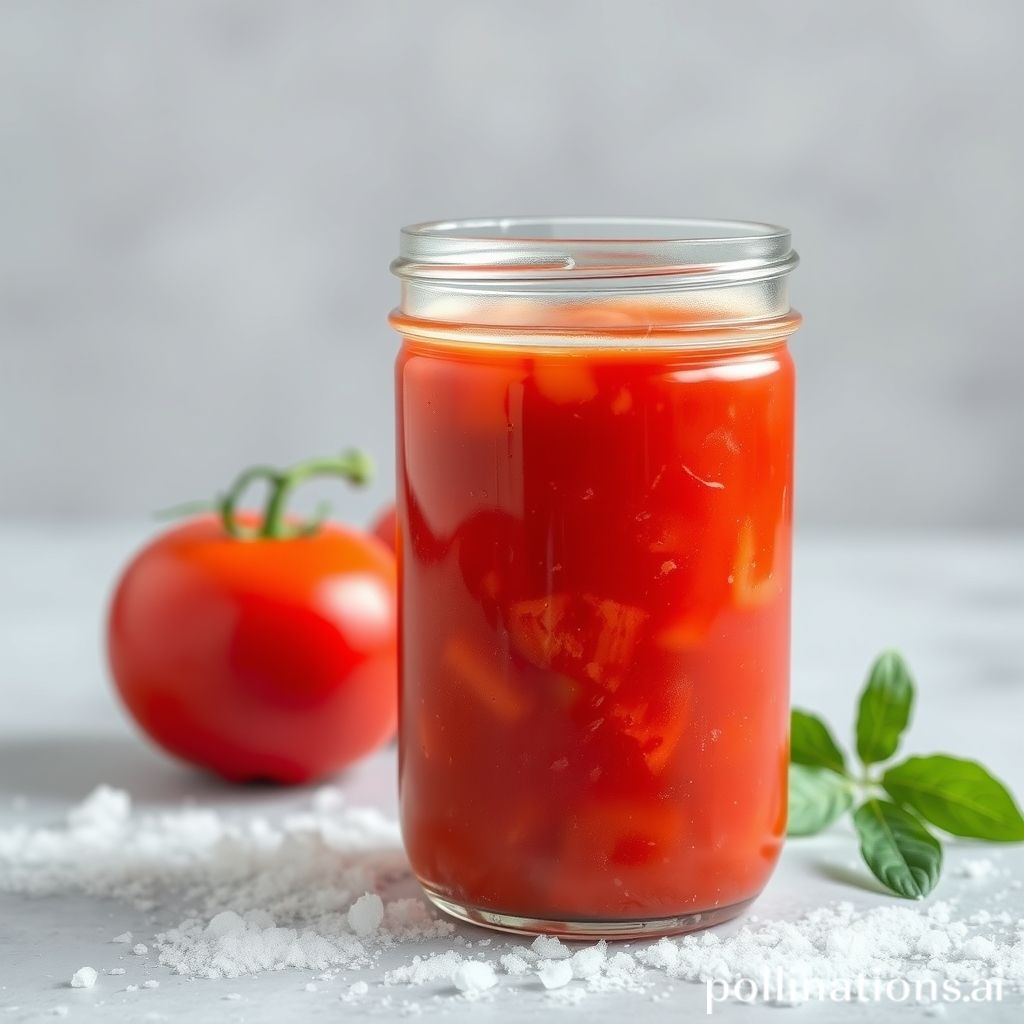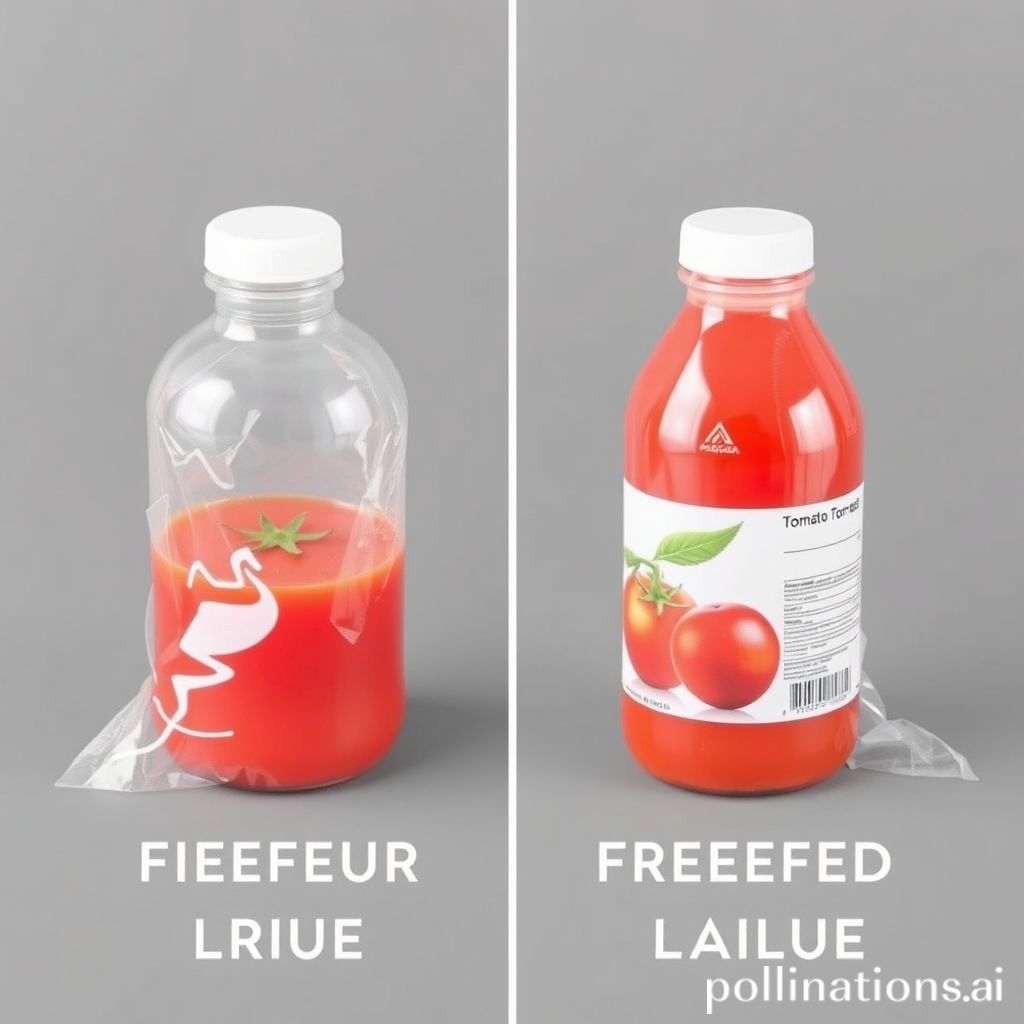Can You Freeze Homemade Tomato Juice?
The idea of preserving the vibrant flavors of summer’s ripe tomatoes is a tempting prospect for many home gardeners and cooking enthusiasts. Freezing homemade tomato juice is an excellent way to capture that freshness to savor throughout the year. Whether you’ve had a bumper crop of tomatoes from your garden or stumbled upon a great deal at the farmers’ market, learning how to freeze homemade tomato juice can be a rewarding and practical skill.
In this guide, we will explore the art of freezing tomato juice, from selecting the ripest tomatoes to preparing the juice and storing it for future culinary adventures. Discover how this simple preservation technique can allow you to enjoy the taste of summer even when the frost is on the ground.

Table of Contents
Benefits of Freezing Homemade Tomato Juice
Retaining Nutrients and Flavor
Freezing homemade tomato juice is an excellent way to preserve its nutritional value and flavor. Tomatoes are rich in essential vitamins, minerals, and antioxidants that provide numerous health benefits. By freezing the juice, you can retain these valuable nutrients for an extended period.
When tomatoes are frozen, their cell structure remains intact, preventing the loss of essential vitamins such as vitamin C and vitamin A. These vitamins contribute to a healthy immune system, good vision, and overall well-being. Freezing also helps to preserve the natural flavors of the tomatoes, ensuring that your homemade tomato juice tastes just as delicious as when it was freshly made.
Convenience and Extended Shelf Life
Freezing homemade tomato juice offers the convenience of having it readily available whenever you need it. By freezing the juice in individual portions or ice cube trays, you can easily thaw and use the desired amount without having to defrost the entire batch.
Additionally, freezing extends the shelf life of homemade tomato juice. Freshly made tomato juice typically has a short lifespan, and its quality deteriorates quickly. However, by freezing the juice, you can prolong its freshness and enjoy it for several months. This is particularly beneficial if you have an abundance of tomatoes during the harvest season and want to enjoy their goodness throughout the year.
Overall, freezing homemade tomato juice is a practical and effective method to retain its nutrients, preserve its flavor, and ensure its availability for an extended period. By incorporating this preservation technique into your routine, you can enjoy the goodness of homemade tomato juice conveniently and with minimal waste.
Preserve nutrients and flavor by freezing homemade tomato juice. Enjoy convenience and extended shelf life. Try it today!How to Prepare Homemade Tomato Juice for Freezing
Choosing Ripe Tomatoes
When making homemade tomato juice for freezing, it’s crucial to select ripe tomatoes. Look for firm, plump, and fully ripened tomatoes with a vibrant color and slightly soft texture.
Washing and Removing Stems
Prior to juicing the tomatoes, wash them thoroughly under running water to remove any dirt or debris. Gently rub the tomatoes to ensure they are clean. After washing, use a sharp knife to cut off the stems.
Blending or Juicing the Tomatoes
There are two common methods for extracting juice from tomatoes: blending and juicing. If using a blender, quarter the tomatoes and add them to the blender. Blend until smooth. Alternatively, if using a juicer, simply feed the tomatoes through to obtain the juice.
Straining the Juice to Remove Solids
To achieve a smooth and pulp-free tomato juice, strain the juice. Place a fine-mesh sieve or cheesecloth over a bowl or large container. Pour the blended or juiced tomatoes into the sieve or cheesecloth, allowing the juice to pass through while trapping any solids or pulp.
You can gently press the solids with the back of a spoon to extract any remaining juice. Discard the solids and transfer the strained tomato juice to a suitable freezer-safe container.
| Benefits of Homemade Tomato Juice |
|---|
| 1. Rich in Nutrients: Homemade tomato juice retains essential vitamins, minerals, and antioxidants present in fresh tomatoes. |
| 2. Versatile Ingredient: Tomato juice can be used as a base for soups, sauces, cocktails, and other culinary creations. |
| 3. Preservative-free: By preparing and freezing your own tomato juice, you can avoid the preservatives found in store-bought options. |
| 4. Cost-effective: Making tomato juice at home can be a budget-friendly alternative to purchasing pre-packaged options. |
By following these simple steps, you can freeze your homemade tomato juice and enjoy its freshness and flavor even when tomatoes are out of season.
Proper Packaging for Freezing Tomato Juice
Selecting Suitable Containers or Freezer Bags
When freezing homemade tomato juice, it’s important to choose containers or freezer bags specifically designed for freezing. These containers or bags are made from materials that can withstand low temperatures without cracking or breaking. Opt for BPA-free plastic containers or heavy-duty freezer bags to ensure the best preservation of your tomato juice.
Leaving Headspace for Expansion
To prevent containers from bursting or cracking, it’s crucial to leave some headspace for expansion when freezing tomato juice. Liquids expand as they freeze, so leaving about 1 inch of headspace in containers or bags allows the tomato juice to expand without causing any damage.
Labeling with Date and Contents
Properly labeling your frozen tomato juice with the date and contents is essential for easy identification and organization in your freezer. Use a permanent marker or labels to clearly indicate the date when the tomato juice was frozen and its contents. This will help you keep track of freshness and ensure you use the oldest tomato juice first, maintaining its quality and taste.
To summarize the key points for proper packaging of frozen tomato juice:
| Key Considerations | Explanation |
|---|---|
| Selecting Suitable Containers or Freezer Bags | Choose containers or bags designed for freezing to prevent cracking or breaking. |
| Leaving Headspace for Expansion | Leave about 1 inch of headspace to allow for liquid expansion during freezing. |
| Labeling with Date and Contents | Clearly label the frozen tomato juice with the date and contents for easy identification. |
By following these packaging guidelines, you can ensure that your homemade tomato juice remains fresh and flavorful when stored in the freezer. Proper packaging not only helps maintain the quality of the juice but also allows for easy retrieval and usage whenever you need it.

Can You Freeze Homemade Tomato Juice?
Freezing Homemade Tomato Juice
Freezing homemade tomato juice is a convenient way to preserve its freshness and flavor for future use. Follow these simple steps to ensure that your tomato juice stays delicious and ready to use whenever you need it.
Cooling the Juice Before Freezing
Before freezing your homemade tomato juice, allow it to cool down completely. This helps maintain the quality of the juice and prevents bacterial growth during the freezing process. Let the juice cool to room temperature before proceeding.
Pouring the Juice into Containers or Bags
Once the tomato juice has cooled down, transfer it into suitable freezer-safe containers or heavy-duty freezer bags. This prevents leakage or freezer burn. For convenience, divide the juice into smaller portions, making it easier to thaw only what you need at a time.
Removing Excess Air and Sealing Tightly
To ensure the best quality and longevity of your frozen tomato juice, remove excess air from the containers or bags before sealing them tightly. This prevents freezer burn and helps maintain the flavor and texture of the juice. Use a vacuum sealer or press out as much air as possible before sealing.
| Information |
|---|
| Freezing homemade tomato juice helps preserve its freshness and flavor. |
| Cool the juice to room temperature before freezing. |
| Transfer the cooled juice into freezer-safe containers or bags. |
| Divide the juice into smaller portions for easier thawing. |
| Remove excess air from the containers or bags before sealing tightly. |
By following these simple steps, you can freeze your homemade tomato juice and enjoy its delicious taste even months later. Whether you have an abundance of fresh tomatoes or want to stock up on tomato juice for future use, freezing is a great option to preserve its quality.
Thawing and Using Frozen Tomato Juice
Thawing Methods
When thawing homemade tomato juice, you have a couple of options. You can either:
- Refrigerator: Thaw the frozen tomato juice in the refrigerator. Transfer the container from the freezer to the fridge and allow it to thaw slowly overnight or for about 24 hours.
- Cold Water: Thaw the tomato juice quickly using the cold water method. Place the frozen container of tomato juice in a sealed plastic bag and submerge it in a bowl of cold water. Change the water every 30 minutes until the juice is fully thawed.
Using Thawed Tomato Juice in Recipes
Once thawed, you can incorporate homemade tomato juice into various recipes to add flavor. Here are a few ideas:
- Soups and Stews: Use thawed tomato juice as a base for hearty soups and stews to infuse them with a rich tomato flavor.
- Sauces and Gravies: Enhance the taste and texture of your favorite sauces and gravies by adding thawed tomato juice. It works well in pasta sauces and meat-based gravies.
- Marinades and Dressings: Elevate the flavors of salads and grilled meats by creating delicious marinades and dressings with thawed tomato juice, herbs, spices, and other ingredients.
Potential Changes in Taste and Texture After Thawing
It’s important to note that frozen and thawed homemade tomato juice may undergo slight changes in taste and texture. Freezing can cause separation and a slightly different texture, while the flavor may be slightly diluted compared to fresh tomato juice.
However, these changes are usually minimal and may not be noticeable in most recipes. The overall quality and taste of thawed tomato juice should still be satisfactory for most culinary purposes.
By following the proper thawing methods and utilizing thawed tomato juice in various recipes, you can enjoy the convenience of freezing homemade tomato juice without compromising its flavor and texture.
Conclusion
Freezing homemade tomato juice is an excellent method to preserve its freshness and enjoy its benefits for an extended period. By properly preparing and packaging the juice, you can retain its nutrients and flavor, while also benefiting from the convenience and longer shelf life that freezing provides.
Thawing the frozen juice is simple, and it can be used in a variety of recipes. Although there may be slight changes in taste and texture after thawing, the overall quality remains intact. So, why not give freezing tomato juice a try and savor its deliciousness throughout the year?
Frequently Asked Questions about Freezing Homemade Tomato Juice
FAQ 1: Can I freeze tomato juice without straining it?
Yes, you can freeze tomato juice without straining it. However, it is recommended to strain the juice before freezing to remove any pulp or seeds for a smoother texture.
FAQ 2: How long can I store frozen tomato juice?
Frozen tomato juice can be stored for up to 12 months in the freezer. Use proper storage containers and ensure airtight packaging to maintain quality and taste.
FAQ 3: Can I freeze tomato juice in glass jars?
Yes, you can freeze tomato juice in glass jars. Leave some headspace in the jar for expansion during freezing. Use freezer-safe glass jars to prevent breakage.
FAQ 4: Can I freeze tomato juice with added seasonings or spices?
Yes, you can freeze tomato juice with added seasonings or spices. However, it is recommended to add the seasonings or spices after thawing the juice to maintain their flavors and aromas.
FAQ 5: Can I freeze tomato juice in ice cube trays for portion control?
Yes, freezing tomato juice in ice cube trays is a great way to have portion control. Once the juice cubes are frozen, transfer them to a freezer-safe bag or container for easier storage and retrieval.

